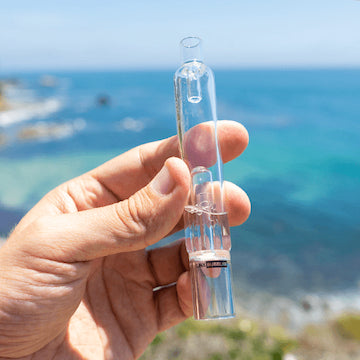Your Cart is Empty
FREE SHIPPING ON U.S. ORDERS OVER $60.
FREE SHIPPING ON U.S. ORDERS OVER $60.
FREE SHIPPING ON U.S. ORDERS OVER $60.
Shop Our Vaporizer Store
Browse through our vaporizer store for award winning portable vaporizers and dab pens. All of the Linx vaporizers are heavy metals tested and certified.
Don't forget to check out our full line of add-ons and accessories that tailor for your different vaping needs.
Get free shipping on US orders over $60.
Shop Our Vaporizer Store
Browse through our vaporizer store for award winning portable vaporizers and dab pens. All of the Linx vaporizers are heavy metals tested and certified.
Don't forget to check out our full line of add-ons and accessories that tailor for your different vaping needs.
Get free shipping on US orders over $60.
Shop Vape Accessories
Shop Vape Accessories
Shop Popular Add-ons
Shop Popular Add-ons
Shop Vape Accessories
Shop Vape Accessories
Shop Popular Add-ons

Eden Switch Dosing Capsule Set
Shop Popular Add-ons

Glass Bubbler

October 01, 2021 3 min read
The History of Cannabis: Part 3 - Racism and the Vilification of Cannabis
So far Cannabis has seen a period of discovery and experimentation followed by a period of global spread.
Up till now Cannabis was held in high regard due to its industrial, medicinal and psychoactive applications.
You would think the world would finally be ready to accept Cannabis as a safe alternative to alcohol or harder drugs. Think again.
From here, a campaign of misinformation and vilification driven by political forces and opportunist, drove the Cannabis industry underground where it would remain for a century.

1900 CE to 1919 CE
In 1906 the Pure Food and Drug Act regulated mandatory labeling of products containing alcohol, opiates, cocaine and cannabis.
This would be one of the first congressional laws regarding Cannabis but wouldn't be the last. To the South, Mexicans are fleeing the violence of the Mexican Revolution of 1910. Hundreds of thousands of Mexican refugees came across the boarder into America.
In doing so, these refugees brought with them their culture and acceptance of recreational cannabis use, inadvertently pushing Cannabis further into the cross hairs of the U.S. Government. 1914 brought with it the passage of the Harrison Act which defined the use of Cannabis (along with other drugs) as a crime.
In 1915, the prohibition on the non-medical use of Cannabis begins, first in California, then Texas, followed by Louisiana and New York in subsequent years.

1919 CE to 1941 CE
In 1919 alcohol prohibition takes effect with the ratification of the 18th Amendment of the U.S. Constitution. It was now illegal to manufacture, sell, or transport alcohol throughout the United States.
This prohibition on alcohol positioned Cannabis as the attractive alternative. But this boost in public opinion would be short lived. Meanwhile, on the other side of the world, Russian Botanists classify another major strain of the Cannabis plant, Cannabis Ruderalis.
Then in 1928, recreational Cannabis use is prohibited in Britain followed by the Chinese governments move to end all Cannabis cultivation in Chinese Turkestan.

In 1933 the U.S. Congress ratifies the 21st Amendment, repealing alcohol prohibition. This is good news to alcohol consumers and bad news for Cannabis users. Four short years after the repeal of prohibition, U.S.
Narcotics Commissioner Henry Anslinger makes it his mission to vilify Cannabis. The Department of Prohibition, which Anslinger headed, was in danger of being dissolved due to its irrelevancy.
Anslinger needed something new to prohibit to keep his department funded. He decided that Cannabis would be his next cause.
From here Henry Anslinger dialed up his anti-Cannabis and full-on racist rhetoric.
“There are 100,000 total marijuana smokers in the US, and most are Negroes, Hispanics, Filipinos and entertainers. Their Satanic music, jazz and swing, result from marijuana usage.
This marijuana causes white women to seek sexual relations with Negroes, entertainers and any others.” - Henry Anslinger
In 1936 the propaganda film “Reefer Madness” was created to scare the American youth away from the use of Cannabis.
The film depicted a hit and run accident, manslaughter, suicide, attempted rape, hallucinations, and descent into madness due to marijuana addiction.
Then in 1937 the U.S. Congress passes the Marijuana Tax Act which further criminalized Cannabis. Dr. William C. Woodward (AMA) testified,
“The American Medical Association knows of no evidence that Marijuana is a dangerous drug and a prohibition loses sight of the fact that future investigation may show that there are substantial medical uses for Cannabis.”
Congress chose to ignore Woodward and sided with the recommendation of William Randolph Hurst, famed newspaper magnate and holder of significant financial interests in the Lumber Industry.
In 1941 Cannabis is officially removed from the U.S. Pharmacopoeia and its medicinal use is no longer recognized in the United States.
With rampant racism and powerful interests lobbying against Cannabis, the future of this amazing plant hung in the balance.
Things do indeed get darkest before the dawn. Stay tuned for the conclusion of this 4 part series, The History of Cannabis: Part 4 - The Rise.
Comments will be approved before showing up.